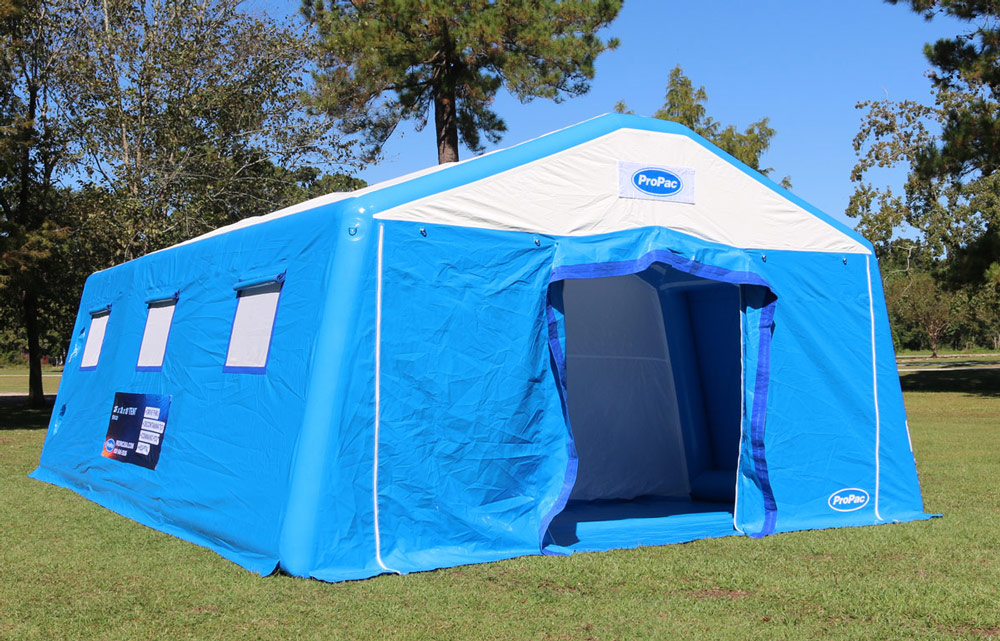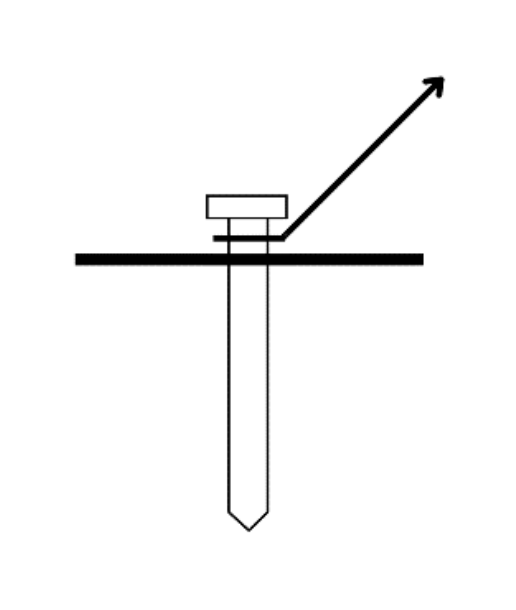
Securing Your Tent: Understanding Wind Ratings and Stake Capacity
Thursday May 2, 2024
With the recent release of our new line of tents, ProPac used 10 years of customer feedback and the basics of tent design to focus on functionality, efficiency, and safety. In this multi-part blog series, we will get back to the basics and discuss how to properly set up your inflatable tent for success. From stakes to D-rings to water barrels and drive-on anchors, this will be a deep dive into all ways to stake and secure a tent.

Emergency Tents
Inflatable emergency shelters support several missions including field hospitals, command posts, bunkhouses, and drive-through/point of distribution, and can provide short-term shelter during emergencies. Usually made from nylon and PVC, they are inflated within minutes through the use of air pumps and require minimal personnel to set up.
Tent inflation is straightforward, and you can check out our YouTube channel to learn how to inflate emergency tents and operate all accessories. To expedite untrained personnel, a QR code is also available on all our inflatable products with links to instructional videos.
Once inflated, the next step in the process is staking the tent and securing it in the event of inclement weather. While our tents are engineered to withstand high winds, WE RECOMMEND DEFLATING AND EVACUATING THE TENT WHEN WINDS EXCEED 35-38MPH FOR SAFETY REASONS AND PROTECTION FROM AIRBORNE OBJECTS. Our engineering however supports gusts beyond 35mph, and we have completed D-Ring testing to demonstrate its strength and anchoring capacity.
Wind Ratings
ASTM F2374-17 discusses safety standards for inflatable amusement rides and the ASCE 7-10 discusses engineered wind loads for numerous types of buildings. For temporary inflatable air tube structures, however, there is no industry wind rating standard, and the ratings mentioned by many manufacturers may be misleading.
How much wind will your tent withstand? Good Question! Here is an important equation and it all starts with the stakes.
Pullout Capacity is the force it takes for a tent stake to be removed from its secured spot in the ground. This, along with any anchoring straps directly correlates to the tent’s ability to stay grounded during high winds.
P = Pb x Ce x Cf x Ci x Cl x Cd < 2500 lbs.
P=pullout capacity
Pb=pullout capacity for a standard stake (baseline)
Ce=correction factor for embedment depth
Cf=correction factor for fastening height
Ci=correction factor for stake inclination
Cl=correction factor for load angle
Cd=correction factor for stake diameter
Let us break down the pullout capacity of our stakes.
Our 36” stakes have a baseline of 800 lbs. when applied to stiff, or medium-dense soil.





P = 800 x 0.76 x 0.97 x 1.00 x 0.9 x 1.00 < 2500 lbs.
(Pullout baseline) x (assuming a 30” depth of embedment) x (a 2” fastening height) x (stake angle from 0 to 15) x (slightly smaller than 1” stake) x (45deg angle of pull)
P = 530.784 lbs.
Using the equation, the pullout capacity for our 36” stake is 530.784 lbs.
Using a hypothetical wind speed of 60 mph applied to our medium tent (250 sq ft side wall at 78deg) results in a wind load of 2,251.3 lbs. When using 16 stakes, we can achieve an anchoring capacity of 8,492.544 lbs. against a wind load of 2,251.3 lbs. That is almost 4X the wind load on the broad side of the structure. However, if you change any of the variables, those numbers will change significantly.
Staking Variables
The location of your setup is a crucial factor. Find an open, flat space free of debris to utilize if possible. Surface types are another factor to consider. The grass is optimal to ensure stakes can be driven deep into the soil, but asphalt or concrete may also work.
Rocky and concrete grounds may present unique problems for anchoring although drive-on anchor plates work well with vehicles on top of them. Water barrels, while effective, may begin to slide on asphalt and concrete surfaces because of the friction coefficient and do not provide as much holding power as the anchor plates.
As for soil types, a medium-dense consistency is the best option. If the soil is too loose or muddy, stakes are more likely to shift.
Best Staking Tactics
When staking your tent, pay attention to the depth and angle of the stakes and soil types.

When putting a 16” or 36” stake in the soil keep in mind that the deeper the stake goes, the sturdier the tent will be. Remember to drive the stake straight down or vertically into the ground with no angle visible. In most cases, a mallet or sledgehammer will assist best in securing the stakes.
Thanks for taking the time to learn a little about the stakes. Next week we will discuss the D-Ring and its importance to securing the tent in high winds.